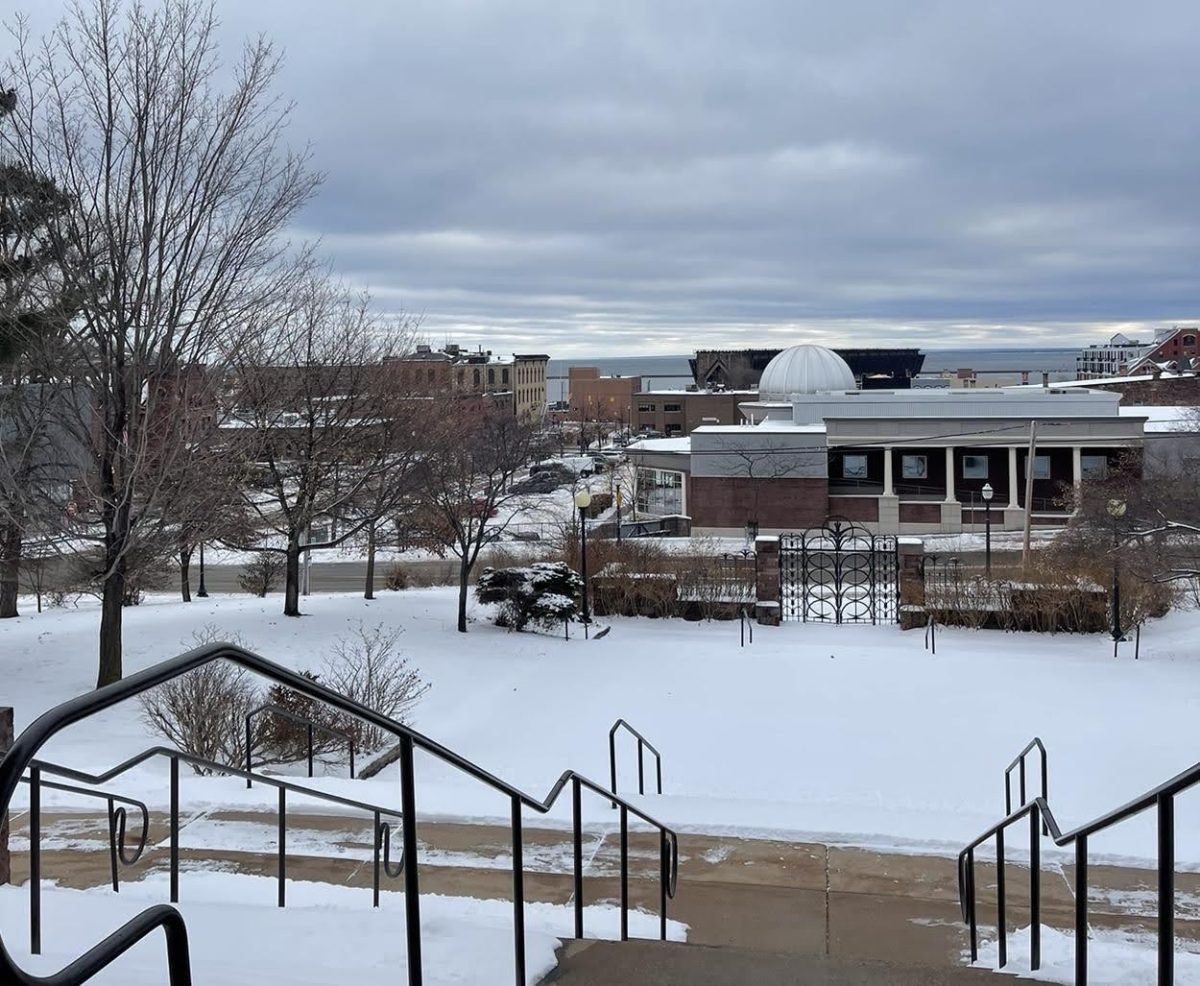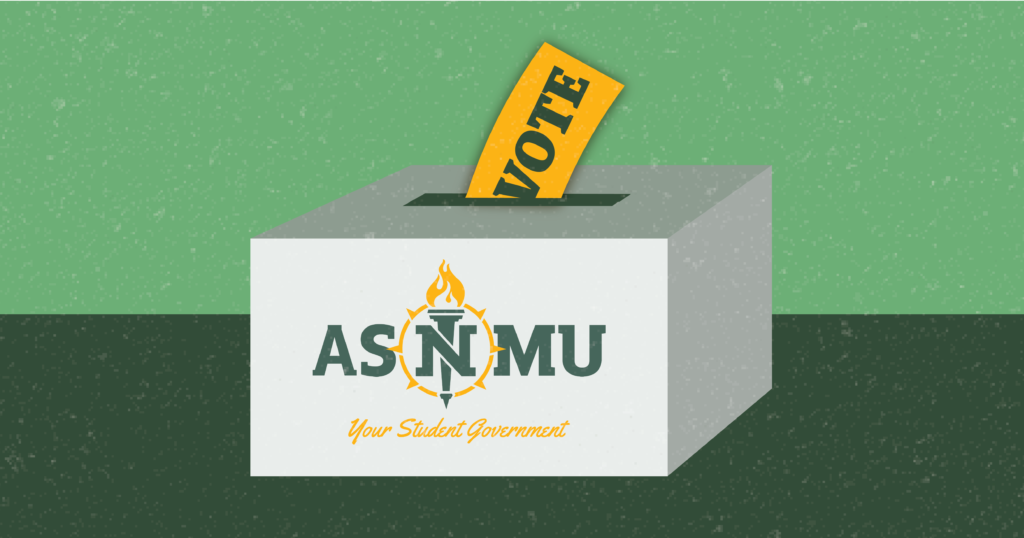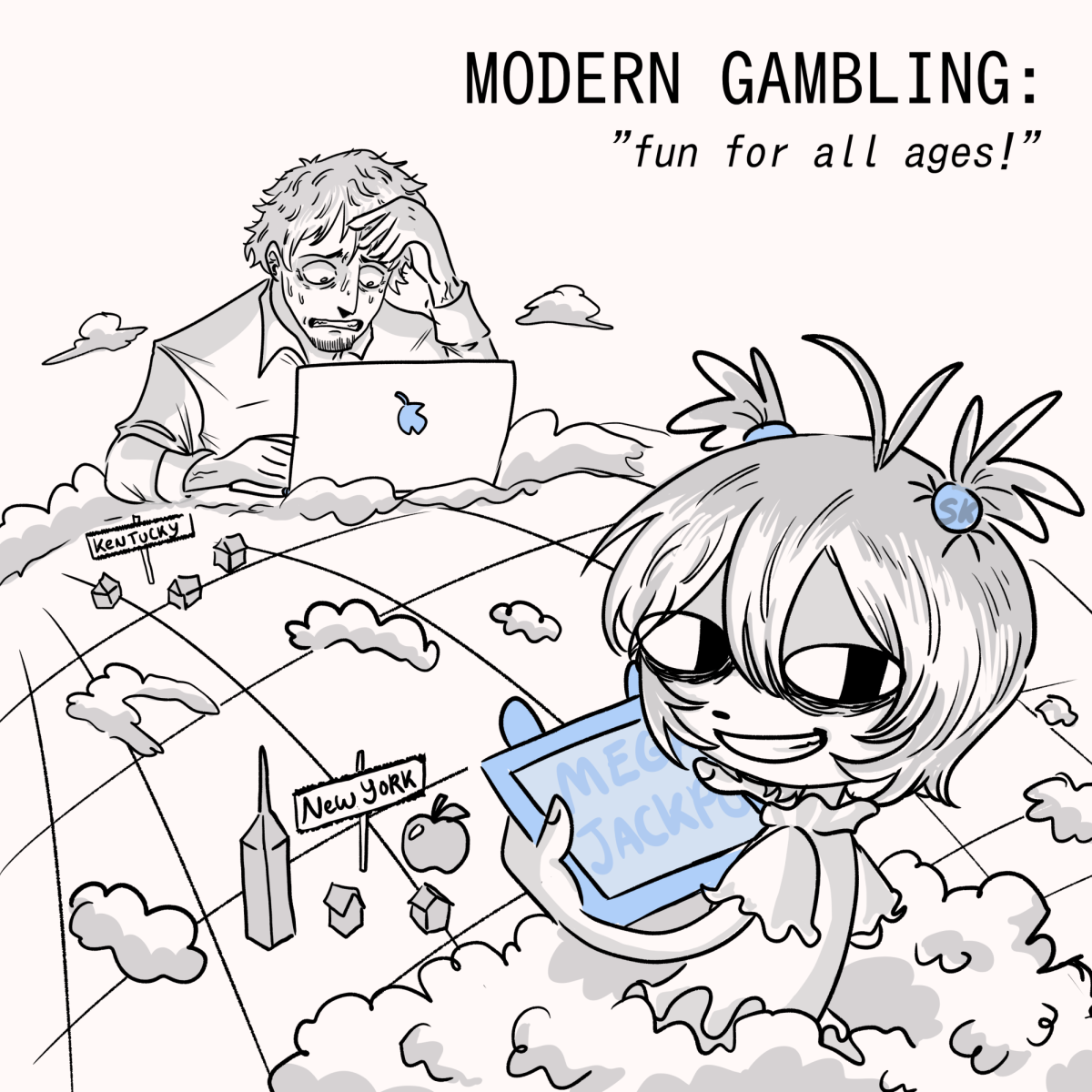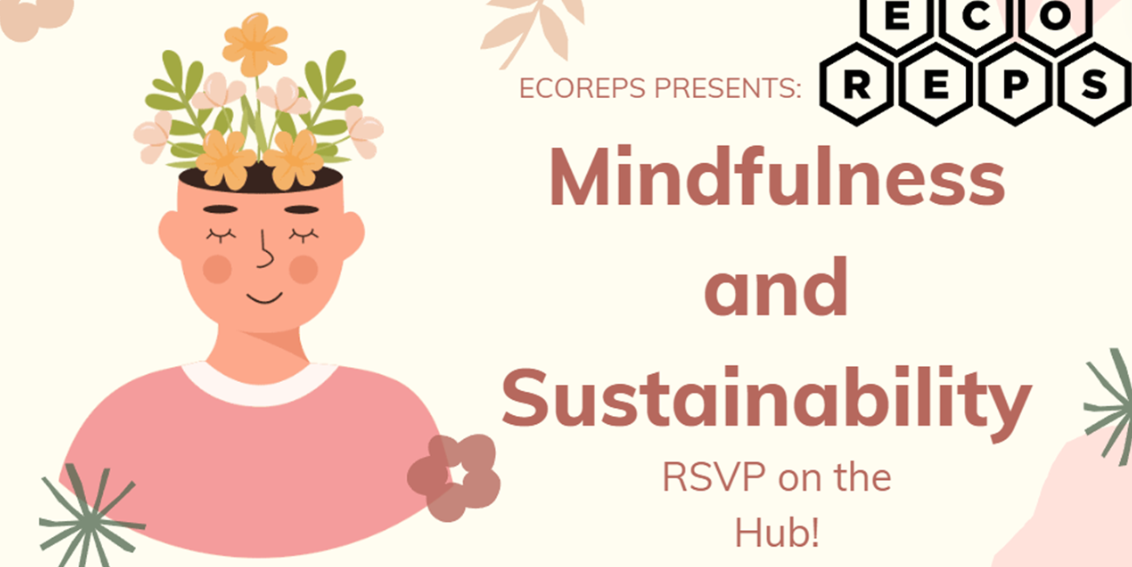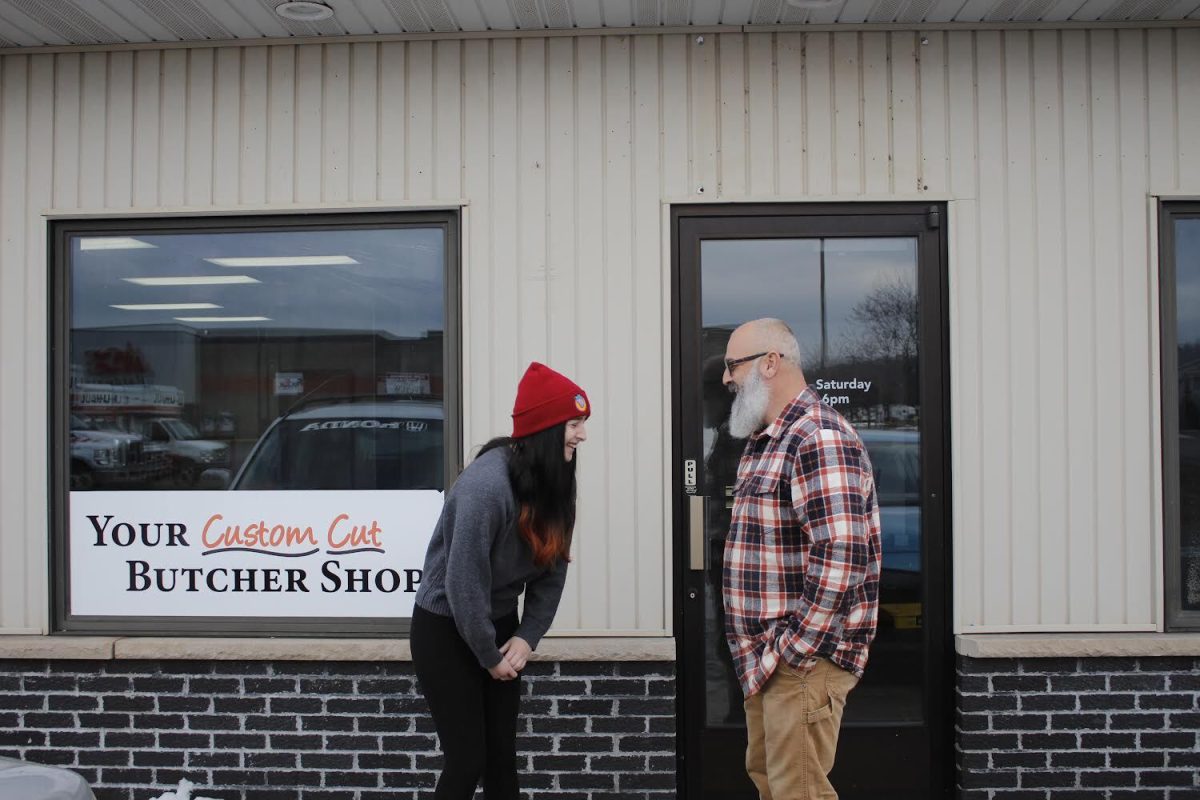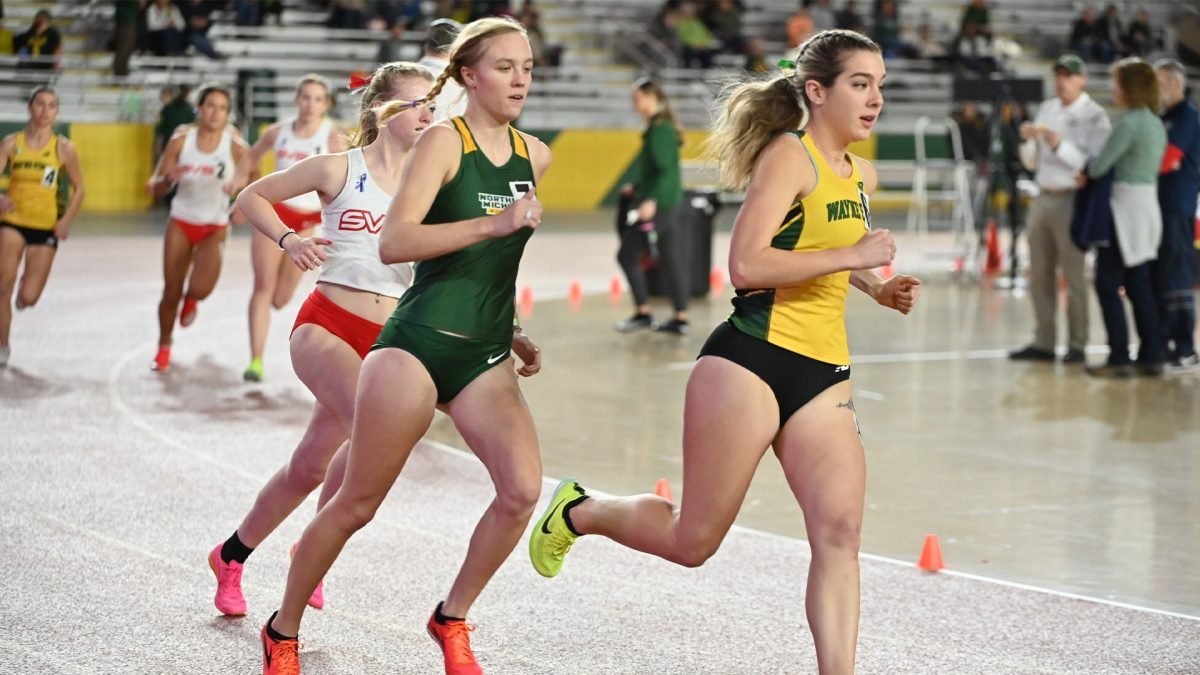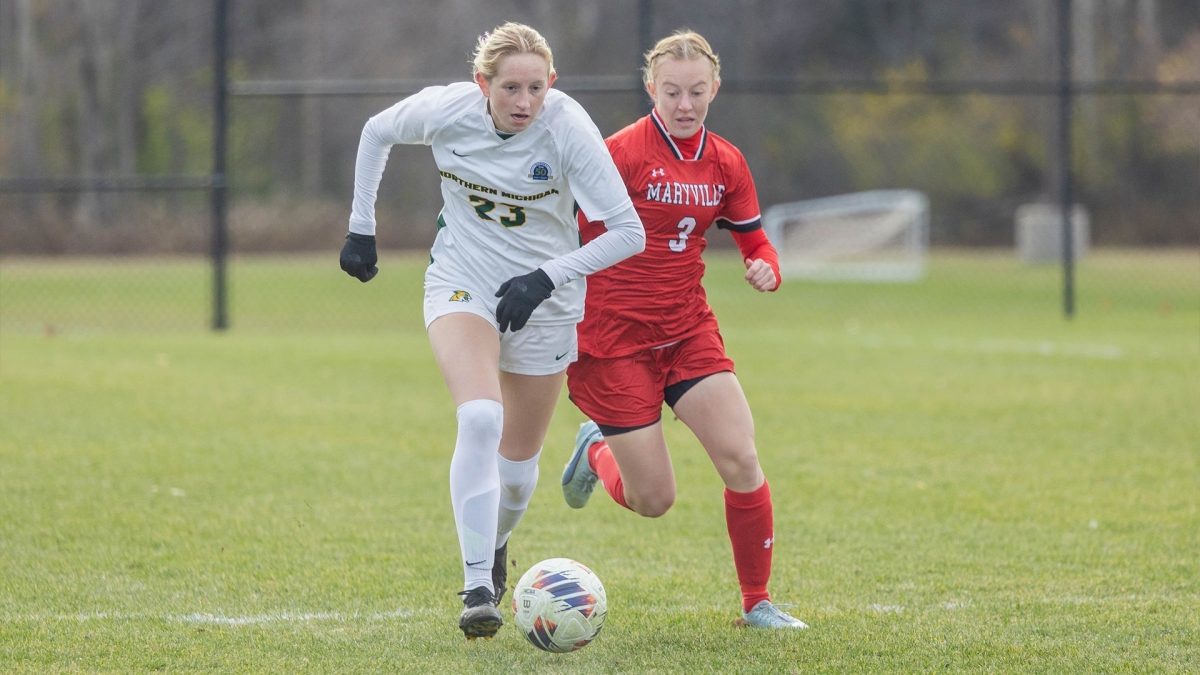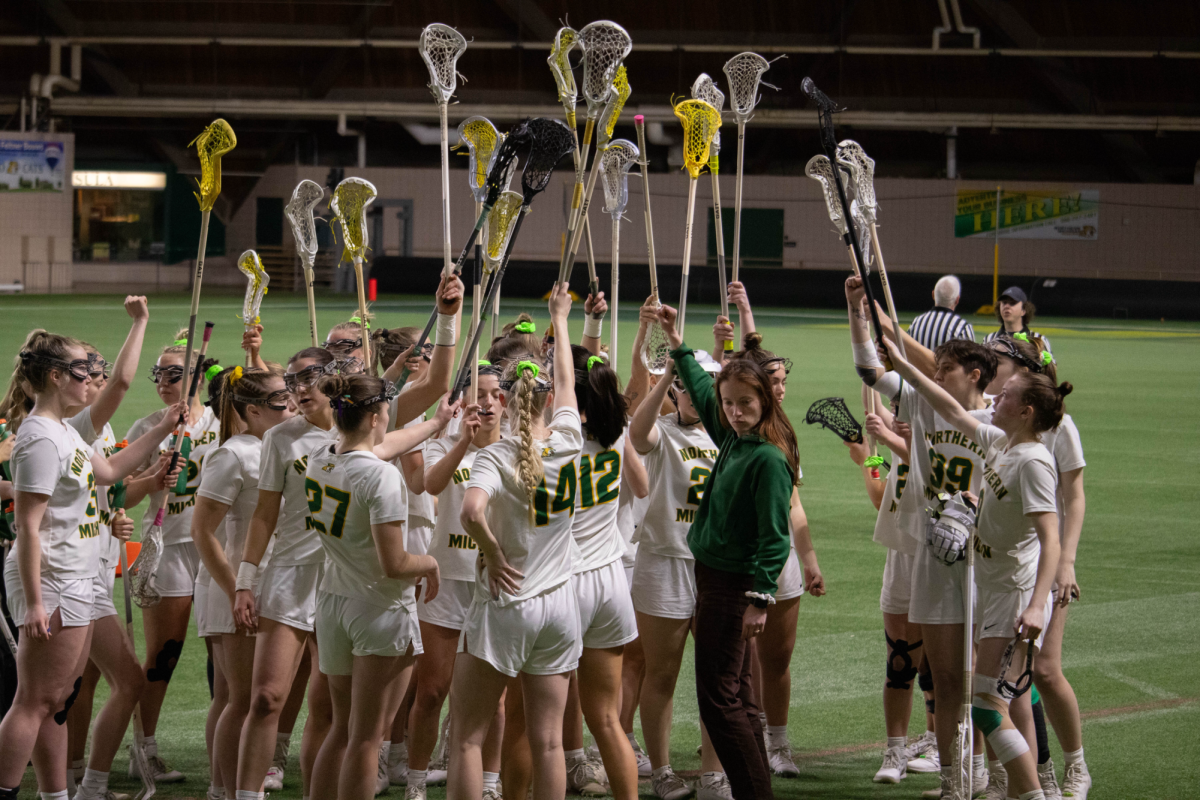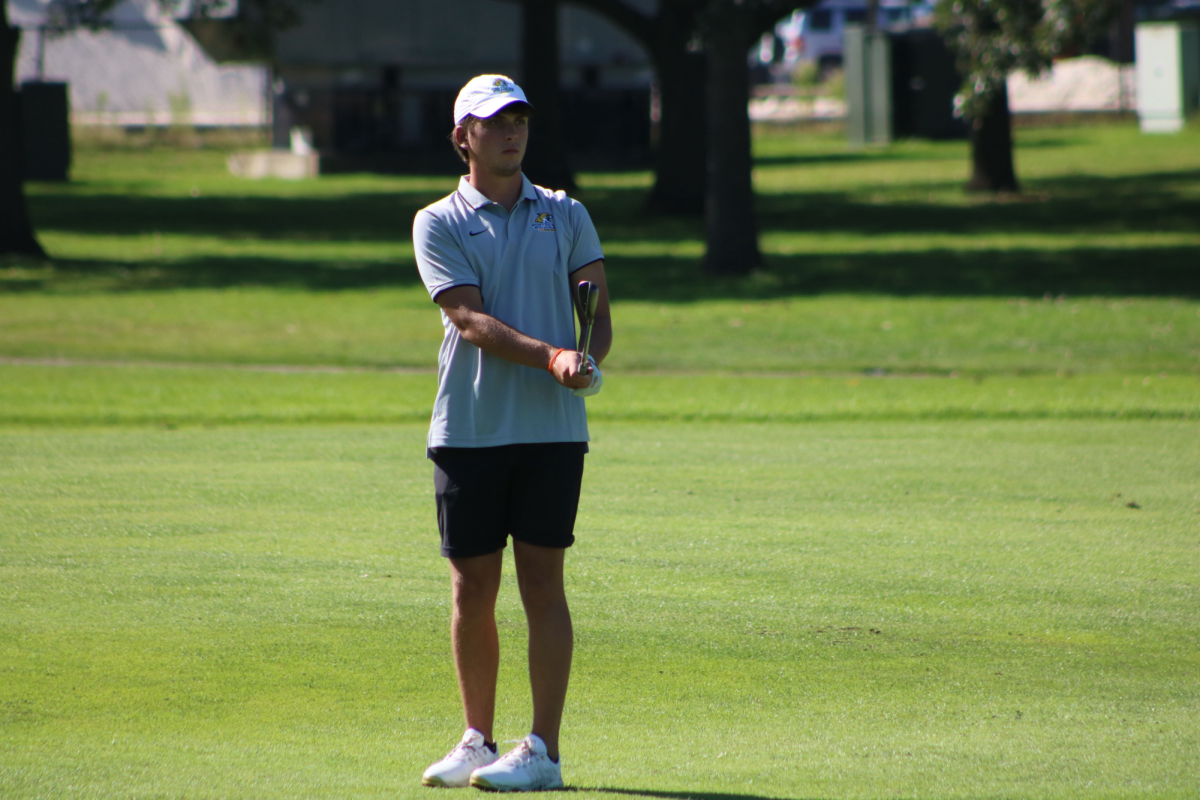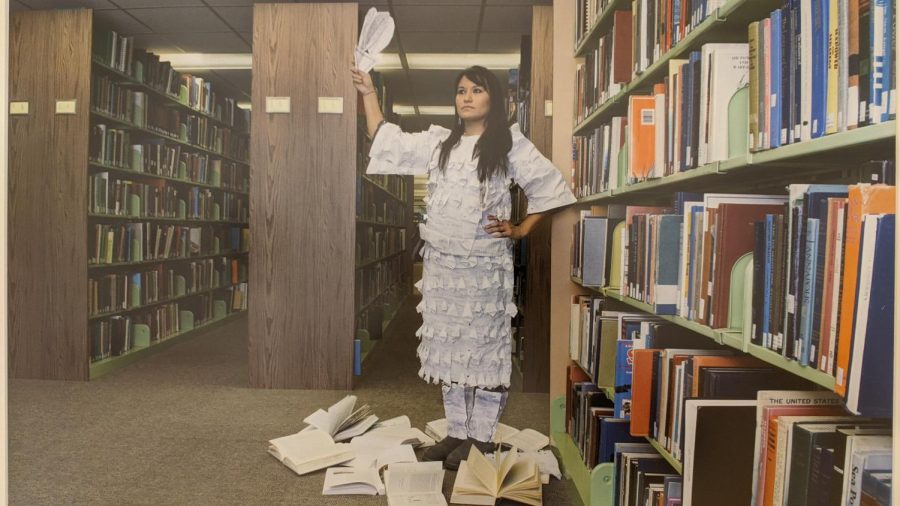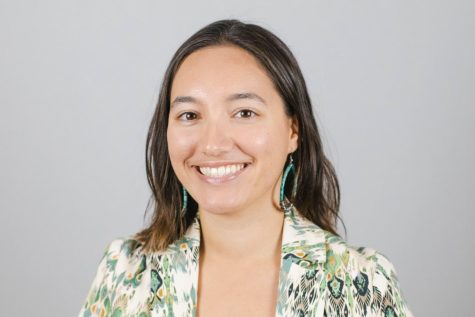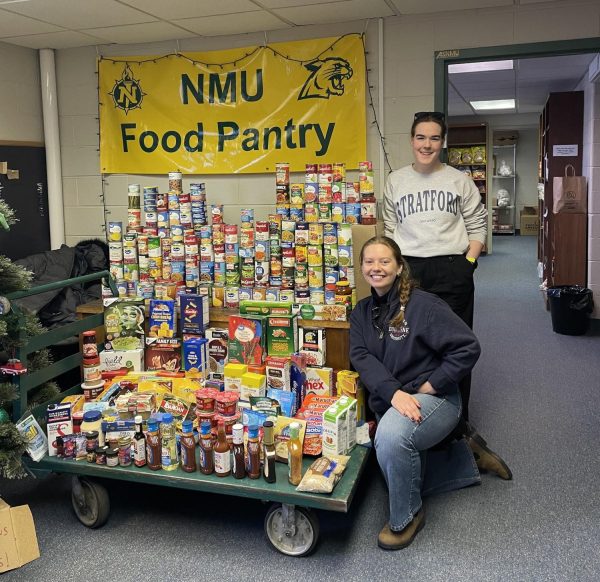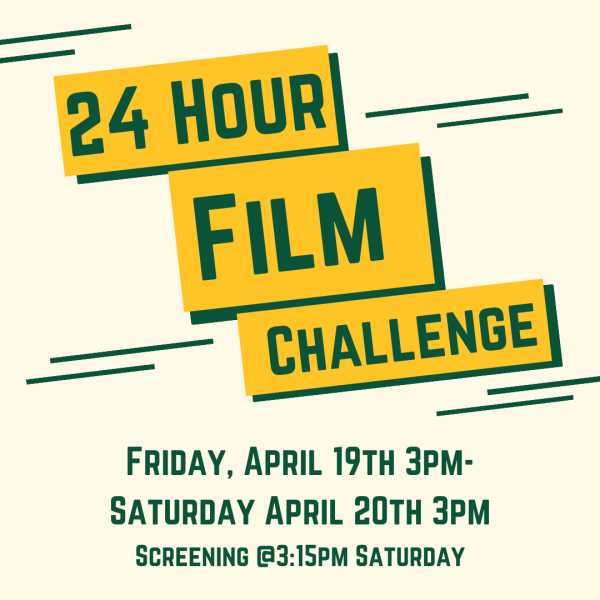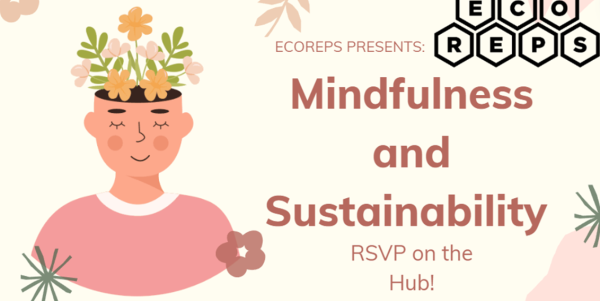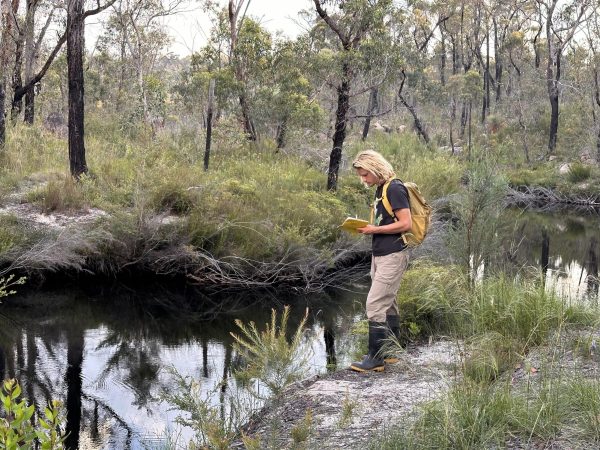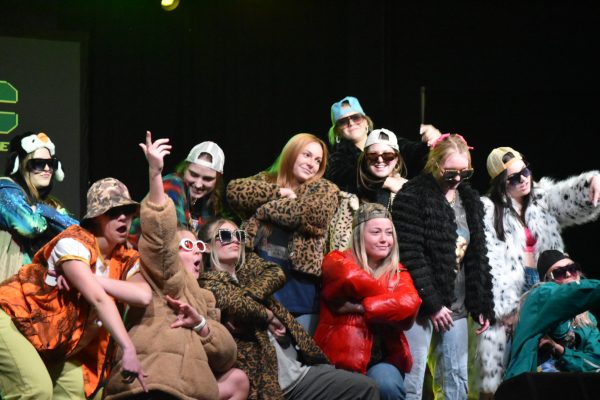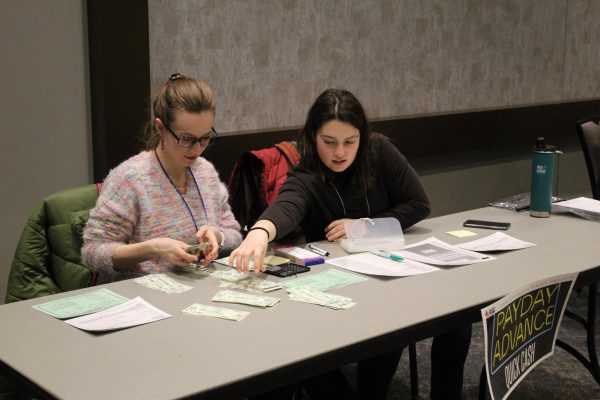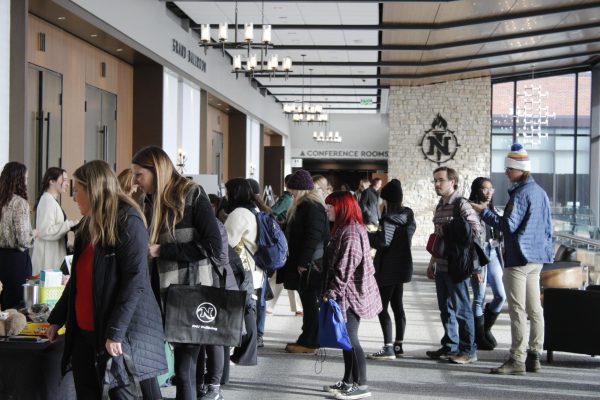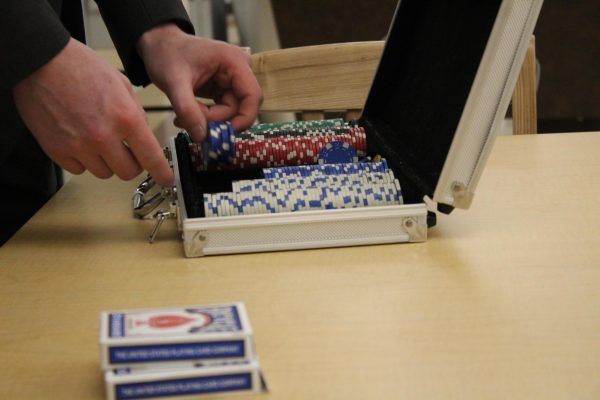Art museum showcases art by Black artists, Native, female perspectives
Leora Tadgerson’s work, “Textbook Indian,” shows a Native woman wearing a traditional jingle dress made out of school papers. The image represents the struggle and healing of Native people learning their culture though textbooks.
September 1, 2021
The first step into the DeVos Art Museum is a pop of color from shiny blue tambourines covered in suede, to rainbow piles of painted basketballs, to giant quilts covering the far wall in pinks, blues and browns.
All the works in this room are part of the “Personal to Political” exhibition which is focused on Black artists and their interpretations of their own narratives and experiences. The exhibition was put together by the Bedford Gallery in California and has been viewed across the country. It will be open to viewing at the DeVos Art Museum until Oct. 31.
“It’s impactful to understand that not everybody’s history is readily available in an artwork, and so be able to add more voices to the conversation and to see more people reflected in the art is impactful and super powerful and very important,” Emily Lanctot, director and curator for DeVos Museum, said. “I can’t imagine there’s a time when any of these artists has ever had their work in the Upper Peninsula. That’s really important and I hope that students are excited to come to experience the show and to think about what they see in this artwork.”
Artists within the exhibit focus on aspects of their lives and histories that they feel are critical to themselves. The art reflects themes such as music, sports, quilting and even family photos.
“I just think that they are coming from such a personal place,” Lanctot said. “The artists in the exhibition are being generous in sharing their personal histories, and it also puts them in a vulnerable position to share this legacy, this history, their personal archives and images.”
The DeVos Art Museum has another exhibit in the next room that also focuses on personal stories and perspectives, particularly from Women in the U.P. The exhibition, “Regional Perspectives by Women Artists,” will be open through 2022.
All of the works in the exhibit are a part of the museum’s permanent collection and include work from regional artists, Japanese artwork, Native American artwork, photography, paintings, illustration and contemporary designs.
The goal of the exhibit is to showcase the different interpretations of the U.P. through the eyes of various female artists. Some are more abstract, some focus on portraits but a lot of the art highlights the land and scenery of northern Michigan.
“The landscape or buildings oftentimes are reflected through their artwork. They’re translating what they see, or reimagining these experiences that they’re having here in the Northwood,” Lanctot said. “Thinking about how we experience this idea of people or place or what we know in the culture that is here through our artists’ eyes and through their translations.”
One of the pieces within this exhibit is “Textbook Indian” by Leora Tadgerson, Interim Director for the Student Equity & Engagement Center. Her artwork depicts a Native student wearing a jingle dress constructed of the notebook paper Tadgerson had used to finish her Native Studies degree at NMU.
“A jingle dress is a healing tool for our people. When a person dances for you in this way, they are gifting you with physical, emotional, spiritual and physical healing,” Tadgerson said. “Those pages held power. We learned of our peoples’ struggles, triumphs and obstacles. Those classes broke me down and healed me, as they do for most people. We each learned about the very complex human experience from a Native perspective, and I couldn’t just see those pages go to waste in the recycling.”
Her photo is meant to call attention to how Native people are learning about their own people and histories through more Western-based practices, such as books and lecture halls. It is difficult for Native people to receive tribal knowledge from their own communities now, the way generations before them did.
“When I look at this photo, it helps recenter me and let go of the shame I hold for not knowing my language as well as I could,” Tadgerson said. “It hits people deep, realizing that we even dream in a colonized language. I began learning as a second speaker my first semester of college. I too felt counterfeit. The term textbook Indian felt very real to me.”
Tadgerson’s work is one of many powerful pieces shown in the DeVos Art Museum this fall. For more information about the museum, visit their website.
Admission to the museum is free and open to the public. Current hours are Monday through Friday, noon to 5 p.m.




